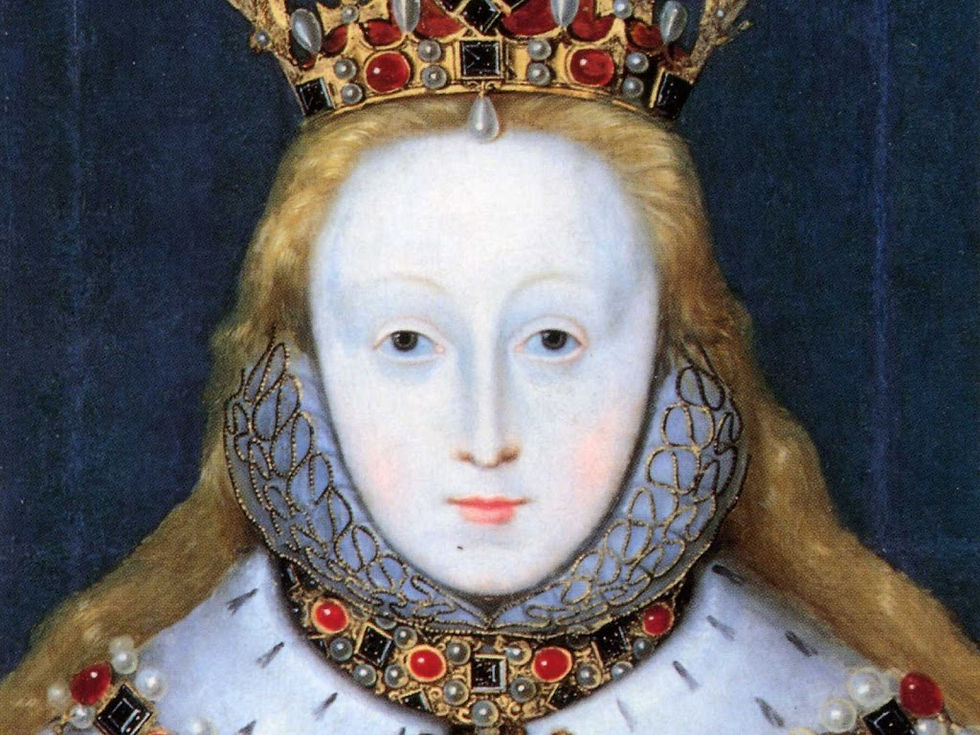Shakespearean Art: Gallery & Insight
- Mariela Rivero

- Nov 12, 2021
- 4 min read
Updated: Aug 14, 2022
In honor of National Go to an Art Museum Day, we’re bringing the museum to you!
During his lifetime, Shakespeare was recognized - for sure. However, his fame was very minute compared to the loads of reverence associated with him today. Did you know a significant factor to this rise in popularity was visual art?!
Interestingly, although Shakespeare died in 1616, visual artists began to engage with his plays in the 1700s. In other words, a whole century later!
All righty! Ready? Shall we go in order? But of course ;) And we’ll just name a few major players…
Nicholas Rowe (1709)
The first published illustrations of Shakespeare’s plays!
First, a short video overview created by the famed Folger Shakespeare Library:
The illustrations provide insight into the staging and design elements of 18th century productions. For example, take the image below. It depicts Hamlet after he throws his chair and jolts up at his father’s apparition. This staging was likely created by Thomas Betterton, an actor who assisted Rowe.

Hamlet, 1709 - Rowe

Tempest, 1709 - Rowe

Richard III, 1714 - Rowe
Thomas Hamner (1740)
Thomas Hanmer published a six-volume edition of Shakespeare's works in 1740. Francis Hayman designed most of the illustrations.
Hayman introduced to book illustration the rococo aesthetic, a style of interior design that originated in 18th century Paris before evolving in other countries. It promotes eloquence and lightness, especially through curving.
Take the illustration from The Merry Wives of Windsor pictured below. Mistress Page and Mistress Ford find themselves in a Georgian room, “escorting” clean-shaven Falstaff into the basket.

Wives of Windsor, 1740 - Hamner

Romeo and Juliet, 1740 - Hamner
David Garrick (Mid 1700s)
David Garrick (1717-1779) was a notable English actor whose portrayals of Shakespearean roles and edits to the scripts helped reignite audiences’ yearning for Shakespeare. Consequently, artists William Hogarth and Benjamin Wilson depicted Shakespeare’s plays, with Garrick as the main characters.
Fun Fact: Just what kind of edits did Garrick make? Let’s look at his Romeo and Juliet: 1) He restored much of the original text that Restoration playwrights had omitted in their adaptations. 2) He added a conversation between Romeo and Juliet before they die! Watch the video below to witness their revised death scene!

Mr. Garrick in the Character of Richard III, 1746 - William Hogarth

David Garrick as King Lear (Shakespeare, King Lear, Act 3, Scene 1), 1761 - James McArdell
Fun Fact: “David Garrick as King Lear (Shakespeare, King Lear, Act 3, Scene 1)” [pictured above] portrays Nahum Tate's version of King Lear, produced in London between 1681 and the early nineteenth century. This edition removed the Fool, kept Lear and Cordelia alive, and had the princess marry Edgar.
Shakespeare Extravaganza
Garrick also organized the Shakespeare Jubilee, a three-day extravaganza at Stratford-upon-Avon held from September 6-9, 1769, after months of publicity. Following the commencement dinner, Garrick delivered an ode as a new William Shakespeare statue was unveiled at the town hall.

Garrick Speaking the Jubilee Ode, 1784 - Caroline Watson
Shakespeare Gallery (1786-1804)
This exhibition commissioned around 170 paintings from artists of varying popularities and displayed them on Pall Mall by St. James’ Palace. The cost to attend was a shilling, and much of the funding was provided by subscriptions to reproductive engravings of the paintings. In 1804, Napoleon’s blockade of European ports forced the gallery into bankruptcy.
Sir Joshua Reynolds, George Romney, James Barry, West, and Fuseli all worked for Boydell (the London print publisher who organized the gallery) and approached their subjects as history paintings, rather than tributes to the stage.

Infant Shakespeare Attended by Nature and the Passions, 1799 - Benjamin Smith (Engraver) & George Romney (Artist)
Fun Fact: According to the MET, “Romney conceived this secular adoration to illuminate Shakespeare’s genius. It focuses on the baby poet blessed by cloaked Nature and watched by figures that embody human emotions. Joy and Sorrow act as chief attendants, while Love, Hatred, and Jealousy watch from the left and Anger, Envy, and Fear stand at right—the group a reminder of the mature playwright’s astounding range. The engraver created this proof to check his progress, with some areas still undeveloped and the stippling at an early stage. When complete, the print introduced a folio-size set of engravings based on paintings shown at the publisher John Boydell’s Shakespeare Gallery in London’s Pall Mall.”

King Lear Weeping Over the Body of Cordelia (Shakespeare, King Lear, Act 5, Scene 3), 1792 - Francis Legat (Engraver) & James Barry (Artist)

"Off, off, you lendings–Come unbutton here" (Shakespeare, King Lear, Act 3, Scene 4), 1793 - William Sharp
Fun Fact: Viewers back then might’ve seen Sharp’s King Lear piece as a suggestion of their own king’s madness! (Do you remember who was the king of England at that time?)
Conclusion
For this article, we only included a handful of artists who significantly impacted modern enthusiasm for the Bard through their work. Want to learn about another critical player? Search up Gordon Craig if you don’t know him already. We think you’ll find his contribution quite fascinating!
Discussion
Did you recognize any of the artwork pictured above?
Besides word of mouth and art, what other tools do you think contributed to Shakespeare’s rising fame?
Do you think studying art pieces depicting a play you’re working on (acting, directing, designing, etc.) is extremely useful? Necessary?
Going off of Question #3, do you feel that a collection of art focusing on a particular play/subject could be considered a visual dictionary or encyclopedia? Does thinking in this way change how you might experience art?
Written by Mariela Rivero
Edited by Laura Yumi Snell






Comments